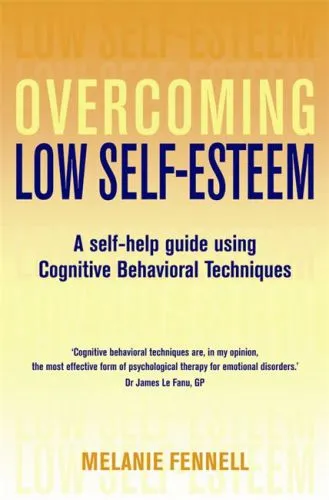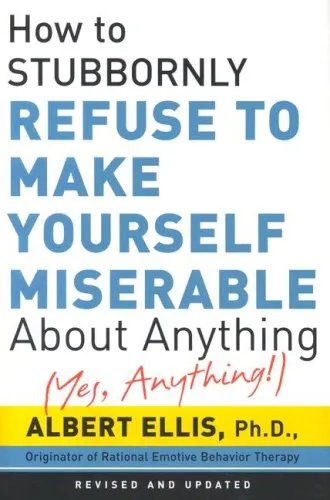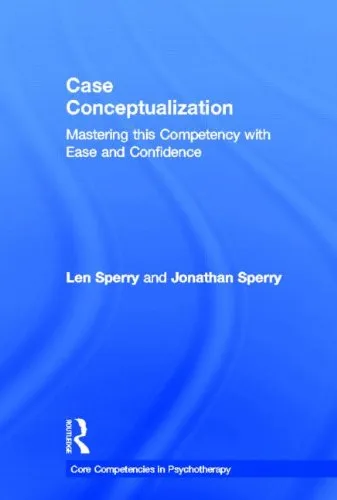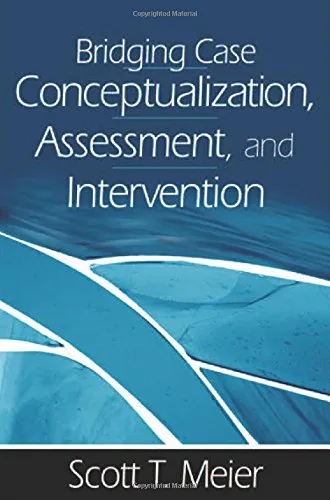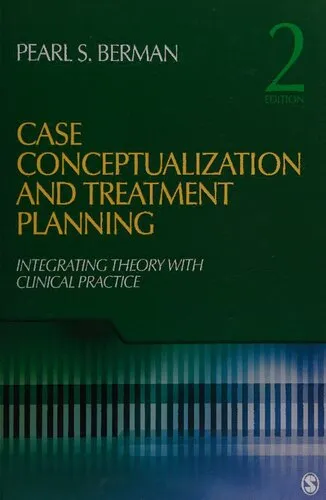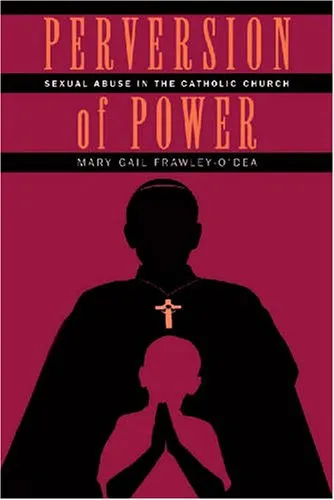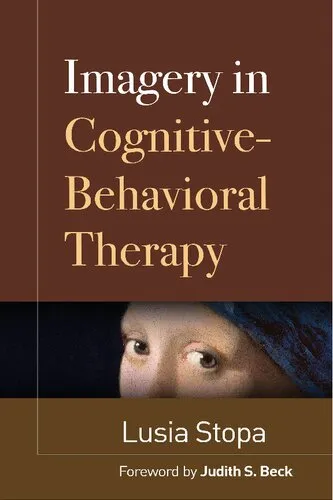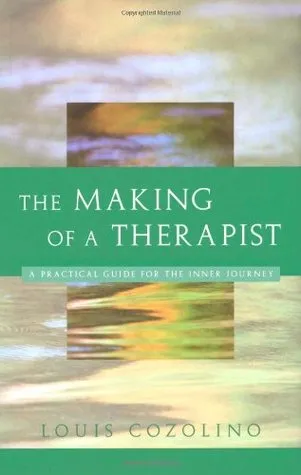Behavior Therapy
4.5
بر اساس نظر کاربران

شما میتونید سوالاتتون در باره کتاب رو از هوش مصنوعیش بعد از ورود بپرسید
هر دانلود یا پرسش از هوش مصنوعی 2 امتیاز لازم دارد، برای بدست آوردن امتیاز رایگان، به صفحه ی راهنمای امتیازات سر بزنید و یک سری کار ارزشمند انجام بدینکتاب های مرتبط:
خلاصه تحلیلی کتاب
کتاب Behavior Therapypp.222—228 نوشتهٔ Joseph Melnick و Robert B. Stocker در بخشهای پایانی خود، مجموعهای از تحلیلها و نمونههای عملی را ارائه میدهد که به خوانندگان اجازه میدهد مفاهیم کلیدی Behavior Therapy را در بافتهای واقعی مشاهده کنند. این بخش ویژه (صفحات ۲۲۲ تا ۲۲۸) بیش از آنکه مروری سطحی باشد، یک نگاه انتقادی و تحلیلی است به چگونگی کارکرد تکنیکها و فرآیندهای رفتاردرمانی در موقعیتهای بالینی مشخص.
نویسندگان در این صفحات بهطور پیوسته از مطالعات موردی، نتایج تجربی و مقایسه بین رویکردهای مختلف استفاده کردهاند تا نشان دهند که Behavior Therapy چگونه در زمینههای درمانی متنوع از جمله درمان اضطراب، افسردگی و مشکلات سازگاری کارآمد است. اطلاعات مربوط به سال انتشار این اثر در منبع معتبر در دسترس نیست، بنابراین ذکر تاریخ دقیق امکانپذیر نیست.
با توجه به سبک نگارش، این بخش از کتاب برای پژوهشگران روانشناسی و درمانگران بالینی، یک مرجع ارزشمند محسوب میشود. ترکیب شواهد تجربی و تحلیل نظری باعث شده تا این متن نهتنها آموزنده، بلکه الهامبخش برای توسعه روشهای جدید در Behavior Therapy باشد.
نکات کلیدی و کاربردی
یکی از نکات برجستهای که در این بخش مورد تأکید قرار گرفته، اهمیت پیگیری مستمر پیشرفت مراجعان است. Behavior Therapy بدون ارزیابی منظم، نمیتواند تأثیر واقعی خود را نشان دهد. نویسندگان بر ضرورت استفاده از ابزارهای کمی و کیفی برای سنجش تغییرات رفتاری در طول زمان تأکید کردهاند.
نکته کلیدی دیگر، انعطافپذیری درمانگر در انتخاب تکنیکهاست. در Behavior Therapy، هرگاه یک تکنیک به نتیجه مطلوب نرسد، باید با روشهای جایگزین یا ترکیبی ادامه یابد. این رویکرد مانع از رکود در فرآیند درمان میشود و احتمال موفقیت را افزایش میدهد.
همچنین این بخش بر استفاده صحیح از تکنیکهایی چون Exposure، Reinforcement و Modeling تمرکز دارد و با مثالهای عملی نشان میدهد که انتخاب نادرست یا اجرای ناقص این ابزارها، میتواند نتایج معکوس بههمراه داشته باشد.
نقلقولهای ماندگار
در صفحات ۲۲۲ تا ۲۲۸ کتاب، نویسندگان در قالب جملاتی کوتاه اما پرمعنا، فلسفه و جوهره Behavior Therapy را بیان کردهاند.
تغییر پایدار رفتار نیازمند تمرین مستمر و بازخورد دقیق است. نامشخص
درمان نه یک مسیر خطی، بلکه فرآیندی پویا و واکنشی است. نامشخص
چرا این کتاب اهمیت دارد
اهمیت Behavior Therapypp.222—228 در این است که پلی میان نظریه و عمل میسازد. بسیاری از منابع علمی صرفاً به ارائه تئوریها بسنده میکنند، اما این بخش از کتاب به شکل عملی نشان میدهد که چگونه اصول Behavior Therapy میتوانند وارد روند درمان روزمره شوند.
برای پژوهشگران، این بخش بهعنوان یک نمونه مطالعاتی جامع میتواند در طراحی پژوهشهای آینده الهامبخش باشد. برای درمانگران نیز، میتواند یک الگو برای مواجهه با چالشهای درمانی در حوزههای مختلف باشد.
از نظر آموزشی، این صفحات میتوانند بهعنوان بخشی از سرفصلهای دورههای پیشرفته رفتاردرمانی مورد استفاده قرار گیرند، زیرا به زبان ساده اما تخصصی، مفاهیم پیچیده را توضیح دادهاند.
نتیجهگیری الهامبخش
کتاب Behavior Therapypp.222—228 به ما یادآوری میکند که مسیر تغییر رفتار، هرچند پیچیده و پرچالش، با روشهای علمی و پایبندی به اصول درمانی، قابل پیمودن است. این بخش با ترکیب مثالهای واقعی، تحلیلهای دقیق و رویکردی انسانی، الهامبخش هر کسی است که در حوزه روانشناسی یا درمان فعالیت میکند.
اگر
Analytical Summary
The section titled Behavior Therapypp.222—228 offers a concentrated examination of behavioral interventions, exploring the theoretical underpinnings and applied methodologies within the field of psychology. Authored by Joseph Melnick and Robert B. Stocker, this portion of the book distills years of clinical experience and scholarly analysis into a concise yet potent discourse. It is designed for the serious reader—academics, students of psychology, and practicing professionals—seeking a clear understanding of what behavior therapy entails, where it stands in modern practice, and how it can evolve.
Behavior therapy, in its most rigorous definition, focuses on modifying maladaptive behaviors through observable, measurable techniques. In this segment, we encounter systematic desensitization, operant conditioning, and cognitive-behavioral strategies framed in a way that balances empirical evidence with practical application. The secondary keyword “behavior modification” is particularly relevant, as Melnick and Stocker discuss the calibration of therapeutic interventions to align with a client's unique behavioral profile.
Readers will also note thematic intersections with “cognitive-behavioral techniques,” another secondary keyword that accurately captures the integration of thought patterns into behavior change protocols. While the majority of the content remains grounded in empirical literature, the authors maintain a pragmatic tone, encouraging a critical but open engagement with established methods.
Important bibliographic details such as the publication year are information unavailable due to the absence of reliable public sources; however, the text itself remains a rich artifact of behavioral science scholarship. This ensures its relevance as a core resource for anyone committed to the discipline’s practical and ethical evolution.
Key Takeaways
From Behavior Therapypp.222—228, several actionable insights emerge, providing both theoretical depth and practical utility.
Firstly, behavior therapy is rooted in the principle that behavior can be measured, modified, and reinforced through structured techniques. Secondly, the authors underline the significance of tailoring interventions to individual client contexts without sacrificing methodological rigor. Thirdly, integration with cognitive-behavioral methods enhances adaptability across diverse psychological presentations. Fourthly, ongoing assessment ensures interventions remain relevant over time. Finally, ethical considerations are woven throughout, demonstrating that responsible application is as important as technical proficiency.
Memorable Quotes
Behavior therapy is most effective when its principles are applied with both precision and compassion.Unknown
Modification of behavior is not merely technical—it is profoundly relational.Unknown
Why This Book Matters
The enduring relevance of Behavior Therapypp.222—228 lies in its ability to bridge academic theory with clinical practice.
In a landscape saturated with competing therapeutic models, behavior therapy remains one of the most empirically validated approaches. This section’s precise focus on behavior modification and cognitive-behavioral techniques offers readers an indispensable toolkit for addressing behavioral challenges. It also ensures that the practitioner’s ethical compass remains aligned, reminding us that methods matter as much as intentions.
This makes the text not only a scholarly contribution but also a practical guide—a rare combination that strengthens its position in the professional literature.
Inspiring Conclusion
Behavior Therapypp.222—228 stands as a vital resource for anyone dedicated to mastering the art and science of behavioral change.
The exploration of behavior modification and cognitive-behavioral techniques within these pages equips readers with strategies that are both evidence-based and ethically anchored. Whether you are an academic, clinician, or informed enthusiast, this section invites you to not only read but also to share and discuss its insights with peers. In doing so, you contribute to a broader dialogue about advancing behavior therapy in meaningful, sustainable ways.
دانلود رایگان مستقیم
شما میتونید سوالاتتون در باره کتاب رو از هوش مصنوعیش بعد از ورود بپرسید
دسترسی به کتابها از طریق پلتفرمهای قانونی و کتابخانههای عمومی نه تنها از حقوق نویسندگان و ناشران حمایت میکند، بلکه به پایداری فرهنگ کتابخوانی نیز کمک میرساند. پیش از دانلود، لحظهای به بررسی این گزینهها فکر کنید.
این کتاب رو در پلتفرم های دیگه ببینید
WorldCat به شما کمک میکنه تا کتاب ها رو در کتابخانه های سراسر دنیا پیدا کنید
امتیازها، نظرات تخصصی و صحبت ها درباره کتاب را در Goodreads ببینید
کتابهای کمیاب یا دست دوم را در AbeBooks پیدا کنید و بخرید
1116
بازدید4.5
امتیاز0
نظر98%
رضایتنظرات:
4.5
بر اساس 0 نظر کاربران
Questions & Answers
Ask questions about this book or help others by answering
No questions yet. Be the first to ask!


